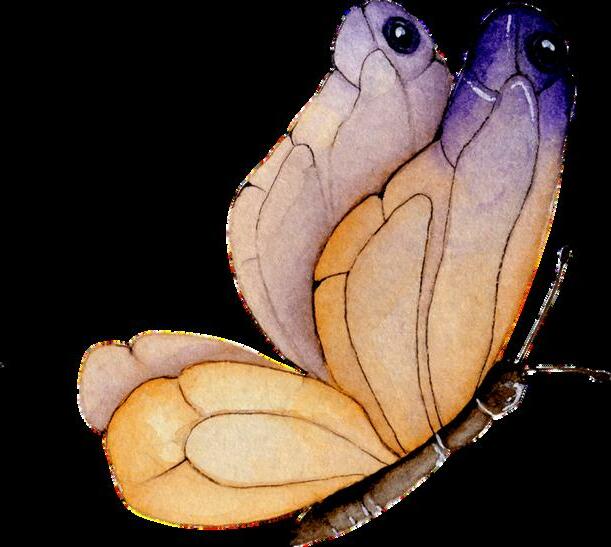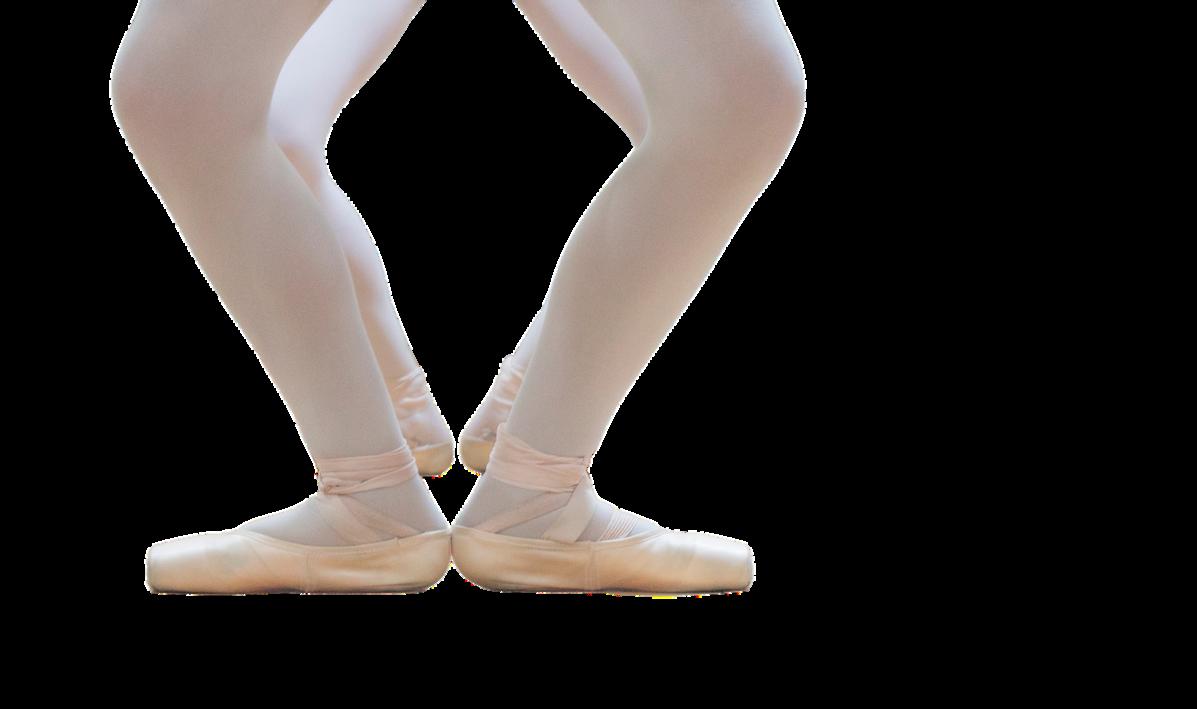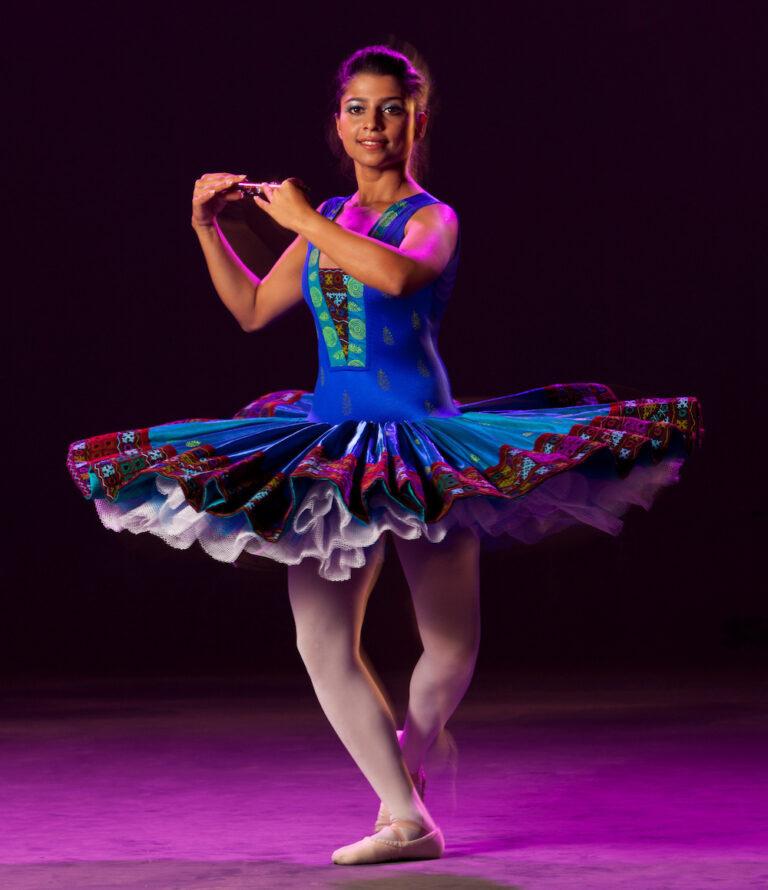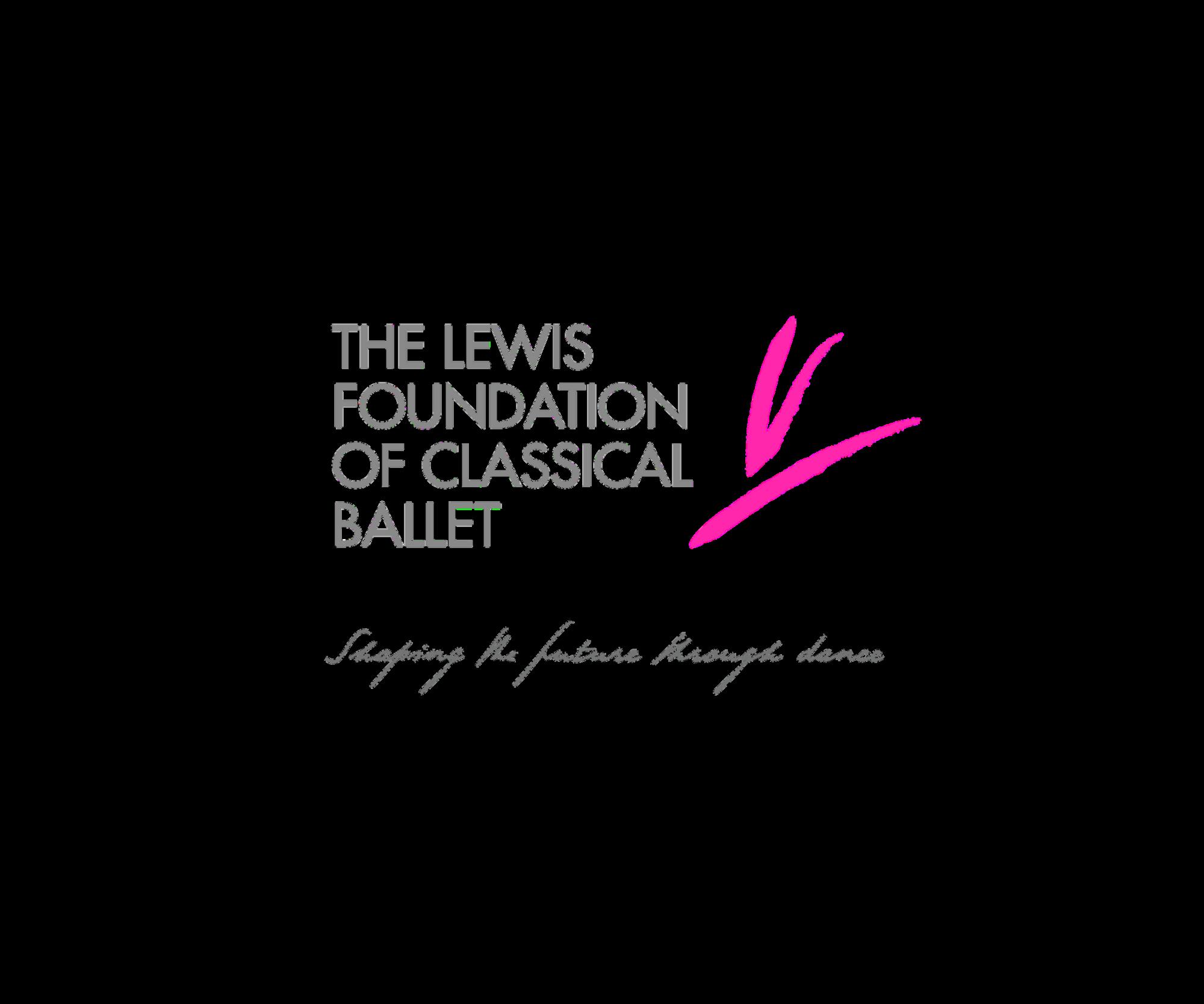Pointe Shoes
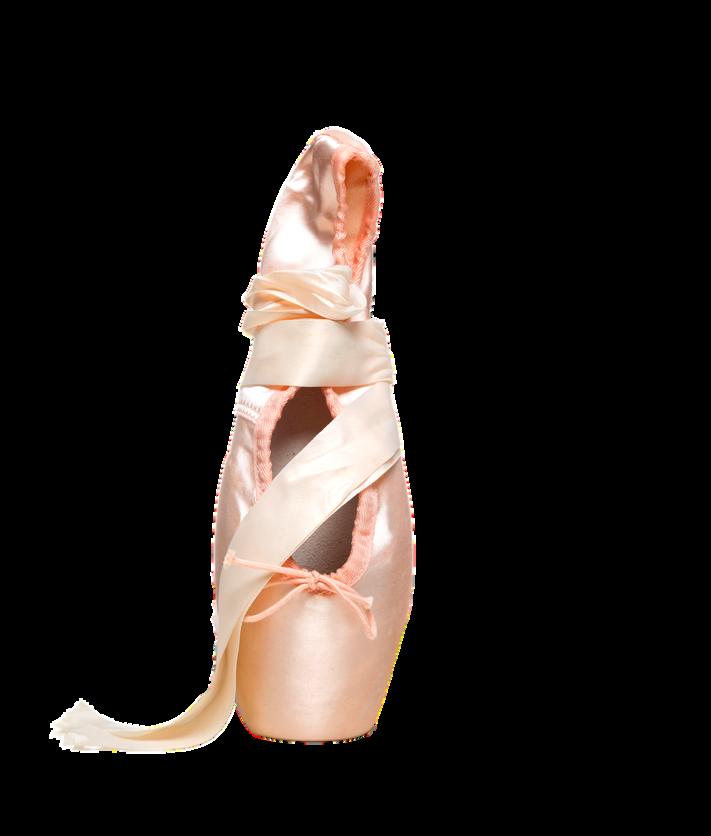









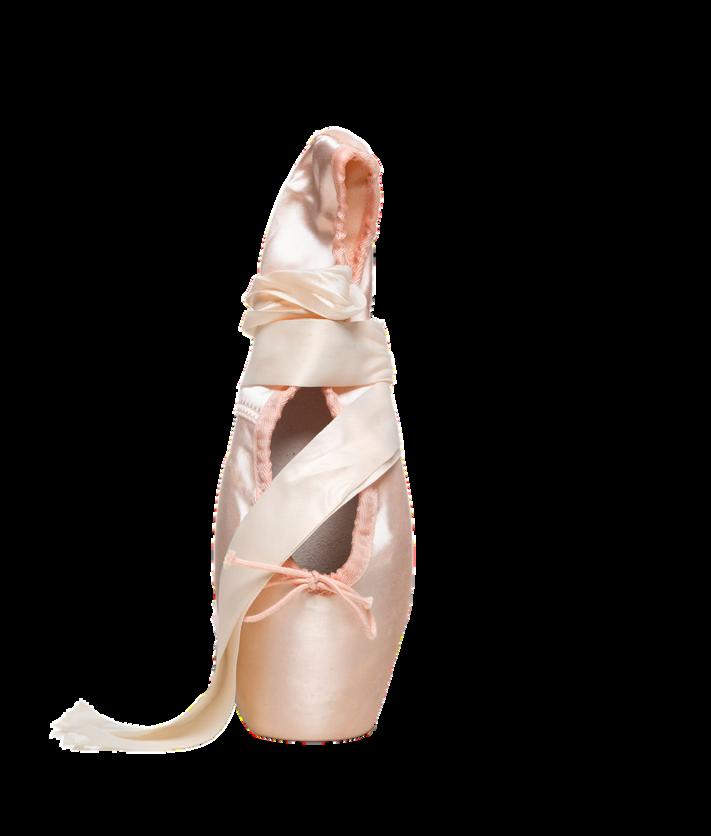












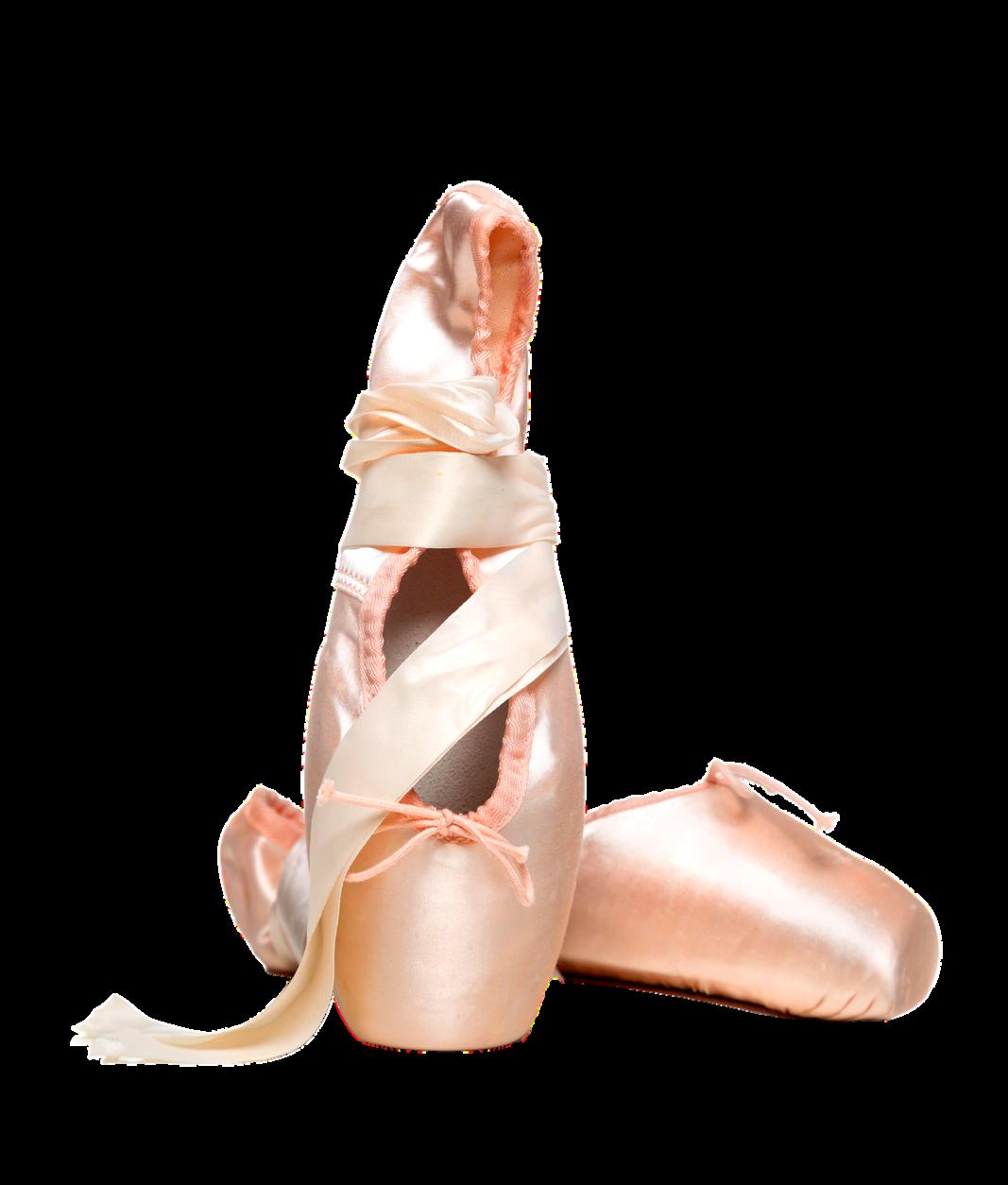 Arpitha Bhat
Arpitha Bhat
The first fitting is an experience you never really forget - a mix of nerves and excitement The first thing Miss Yana did was check the shape of my feet and toes, and how strong or flexible they were Once the shoes were on, she checked the fitting of the shoe by asking me to plie in 1st position, checking if my toes touched the ends of the shoe Then she told me to step up en pointe A train of thoughts sped through my head at that moment and the first one was a very incredulous 'I'm actually doing this, this is very much real!'
I tried on 3 different pairs until we found the right fit. I was given instructions on how to sew my shoes as well as some padding for my toes and I was all set.
A month after the fitting, I had to attend prepointe classes for a few weeks Pre-pointe classes are done in order to learn basic movements and start in the right direction I started with wearing my pointe shoes for ten minutes, and then wore them for a little longer every week
We did pliés, tendus, rises with a tennis ball between the ankles, rises in first position and échappés for those three to four weeks These classes helped me get a sense of what future classes would be like, and I also came to know what I needed to work on or where my weaknesses lay Unfortunately, with no thanks to h d i ld h f
Are you having trouble sewing your pointe shoes?







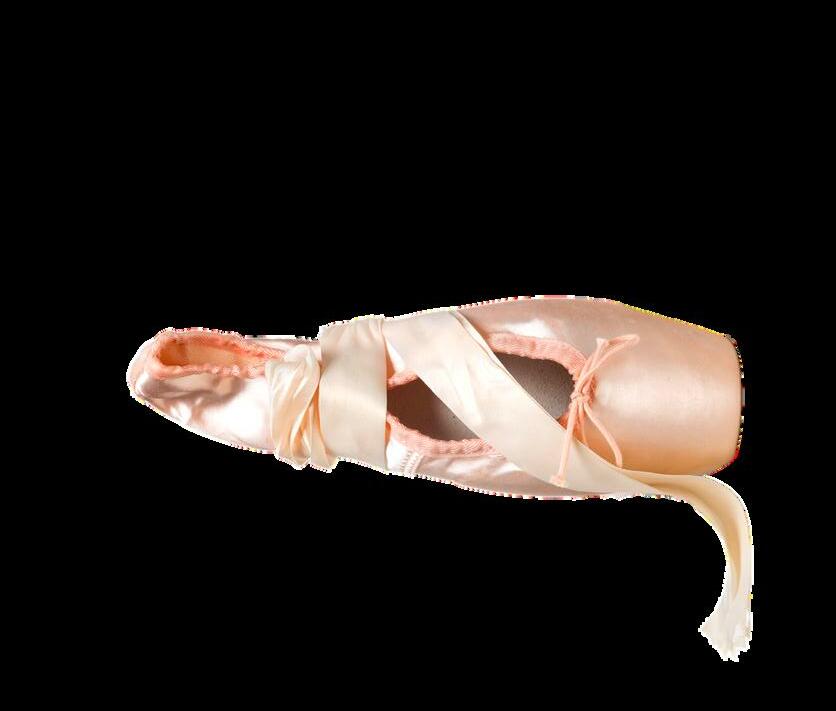
Watch Miss Sushmitha in this tutorial to learn how to sew your ribbons and elastics perfectly!
We started with pliés and tendus: slow and not painful at all But the more we did, the more my toes wanted to fall right off my feet I was trying to hold on to the fact that I made it that far, while grasping onto the barre and waiting to take my shoes off My bi thd t b ised toenail (or two), but
unnily enough, I'm still shoes, although they are With two ankle injuries sult, I've been constantly ecause another injury is
and drawing alphabets helpful, as they help feet You can find some
ancing en pointe is a me of just how far I've allet class over ten years ns to the little girl who'd computer screen with

FTHE OP deas g ed
ON BEING A STUDENT OF DANCE
How old were you when you did your first ballet class? What was the experience like?
The first class I did was when I was six The reason I went was because one of my friends went Honestly, I don’t really remember it that much I remember us playing some games and I remember liking it and having a nice time More than that I remember that I took the bus with my friend on my own to and from the class, which was a big deal

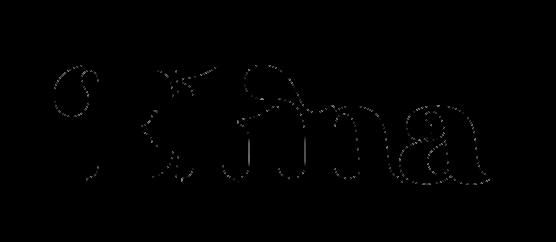
When I was nine, I auditioned for a school that had dance as part of the curriculum They had music classes and they had dance classes My sister was already in the dance class My brother attended the music classes I was there for two and a half years until we moved to Malaysia, at which point I went to an international school There I joined the after school dance team from seventh grade onwards In grade 8, I also joined a studio outside of school I didn’t do ballet there, I attended jazz classes and did a couple of jazz exams with them Those were my first formal dance exams
And your first class with Miss Yana?
I moved to India when I was just about to turn sixteen, because of my dad’s work. We lived in Malaysia before this, and we had a choice of either coming here or going back to Sweden after three and a half years, and everybody was like, ‘Not back to Sweden please!’ I went to Canadian International School. The first weekend that we were here, my mum went to the Overseas Women’s Club and she asked around for dance classes, and Miss Yana’s name came up. So my very first weekend here in India I went to Miss Yana’s ballet, jazz and callanetics classes…
That’s when dance became serious for me. I did all her classes, whatever she was teaching. She used to teach junior jazz in Alliance Française and I used to go there and help with that, too
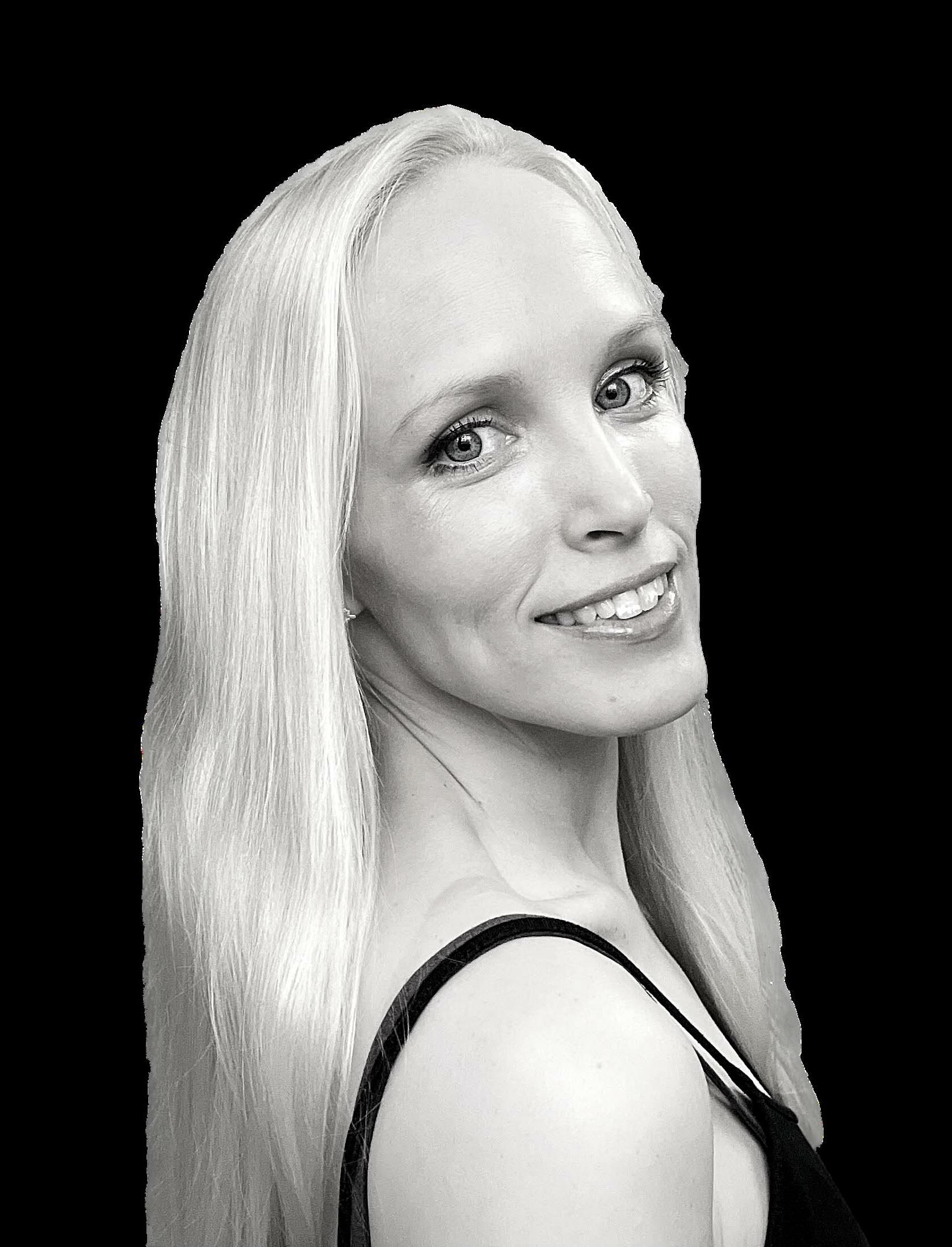
What is the difference between learning ballet abroad and in India?
Honestly, my only real experience before Miss Yana was not particularly technically detailed or precise. I guess that’s the difference. I don’t remember that kind of precision and detailed work in any of my other ballet classes before joining Miss Yana Having said that, I only really started taking ballet seriously once I came here I think the reason was that I realised that there was so much more to it than what I had experienced before Technically, but also artistically and in terms of anatomical understanding It’s a never ending process of learning.
Describe your experience learning under Miss Yana
I’ve been learning under her for more than 21 years now I think one of the beautiful things is the development of understanding that you get over the years I was just speaking to her the other day about how I’ve been learning with her for so long that she really only needs to look at me and I know what she’s thinking that I need to adjust. I may not always be
FEATURE TEACHER
We all know Elina Wisung as a teacher. Fun loving and our favourite in-house fairy, her classes are a joy to be in.
Now get to know her as a student!
ON BEING A DANCE STUDENT
able to adjust what she’s (sometimes telepathically) telling me, but the years-long process of learning has been so deep anatomically, mentally (and emotionally!) that I have such an amazing understanding of my body Again the beautiful thing is that there’s so much more to learn I’m going to a physio now for an old injury that I’ve had and Miss Yana is part of that process She sits with me so that she knows how to help me later, when the physio is done There’s so much learning there that translates back into my technical understanding of ballet and teaching It keeps growing, there’s no end to it Miss Yana often says that she’s always learning as well It’s this beautiful knowledge, development and continued learning that translates through the generations, from her through me, through me to my students and hopefully onwards through there as well Because she’s so detailed and has such immense knowledge, I think we’re all very lucky to have that source It ripples out
And while tea
I can’t think o many fun moments when theres some teaching aspect or some story and a kid will get into it so much that it’s such a joy to watch them do it I have one student in a Pre-primary class, who, when I tell a story, just laughs She just heartily, belly laughs at my story, whether it’s funny or not She just really enjoys it, and that’s one of the most fun parts of teaching, because when kids have fun they’re going to absorb what you’re doing as well Her mum tells me that she goes home and teaches her father every part of the class She’ll go through every section and teach her dad You just know that she’s absorbing and gaining so much from that class, and that brings an immense amount of joy
What was the first role you played on stage?
One of the funniest, in retrospect, was when we were doing a piece called Momentum, and it was Miss Sushmitha, myself and Sid (some readers will remember him) It was really fast paced - you know Miss Yana - all jumps for two and a half minutes, no breathing space We’re doing this piece on stage and suddenly I’m like, ‘Where’s Sid?’ I could see Miss Sushmitha out of the corner of my eye and I’m passing her a glances for a second thinking, ‘Wha I was wondering if he had fallen of finished the dance, he was still n seen, and we ran off stage. His pan ran off stage! It was not funny in th it’s pretty funny now.
Most of the time when funny stu stage, it’s funny in retrospect, but moment. Anything you’re not expe in that moment is usually like, ‘Wh Having said that, I’ve had som moments, especially with danc Sushmitha and Dayita, both of wh with for nearly 20 years. When we d we really enjoy it. We have such a events and shows - all these amazin really feels like a blessing that together


In Sweden, I remember we had those Charlie Chaplin style hats and white shirts and suspenders and black pants We did a jazz piece, but I actually have no clue what the music was or anything I remember the backstage experience more than the onstage experience I’m not sure why!
In Malaysia, the first big show that I did lots of pieces in was in 7th grade I performed in an international fest show From then on, I did a lot of shows in that

What was the funniest experience you had while on stage?
Miss Elina and YLDC, before a show in Kerala.
Miss Elina and YLDC, at a photoshoot at Opus
Do you remember seeing MIss Elina as Cinderella or as Dorothy in Oz the Ballet?
What was your favourite role?
That’s a tricky question I like playing a main character, there’s no getting away from that! I really liked doing the fairies in Sleeping Beauty The six of us ‘main’ fairies really became a team - it was really nice to work together In terms of process and my own technical development I really enjoyed that I also enjoyed Mrs Potts in Belle and the Beast a lot She was really my own to create I had not watched anyone do Mrs Potts in a ballet, there was no set thing that I had to follow Plus I loved that costume! So a solo character, I think Mrs Potts As part of a team, the Sleeping Beauty fairies
Tell us about the dance colleges that you auditioned for in London
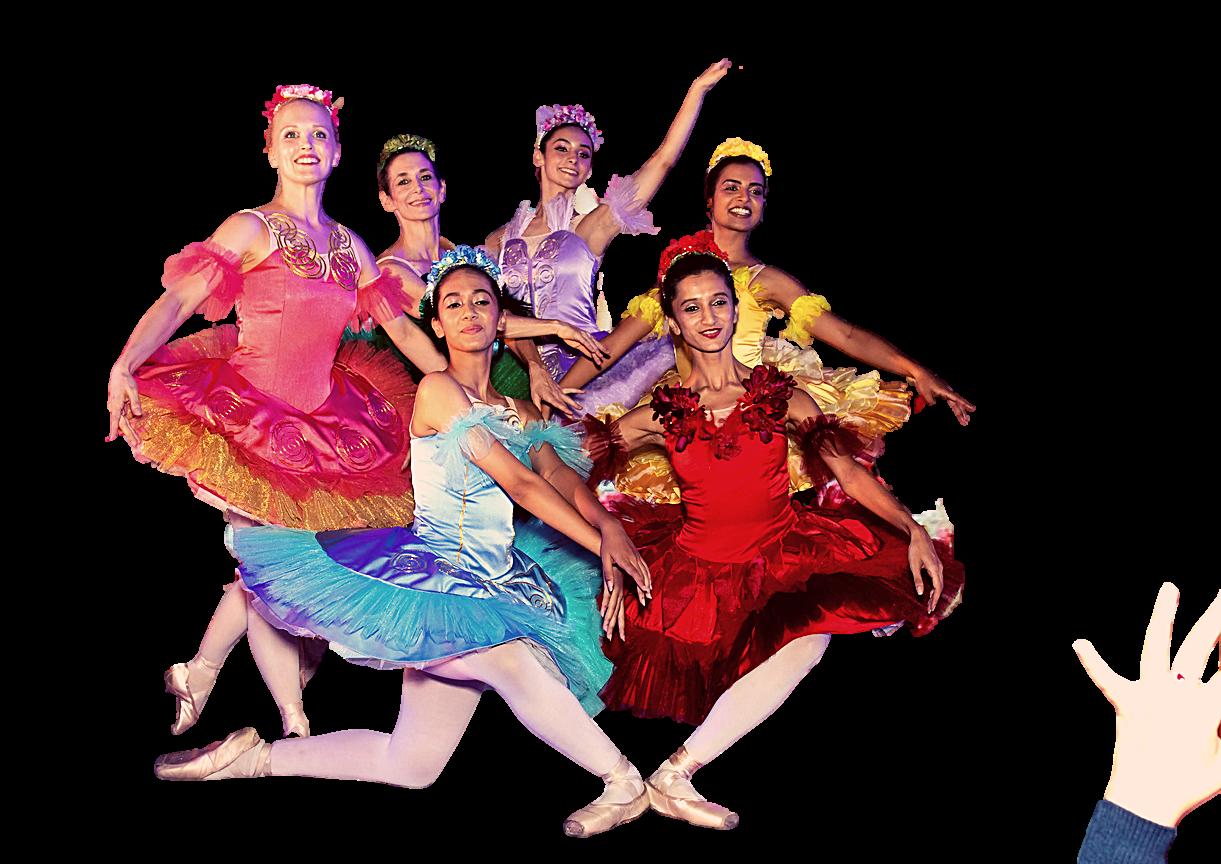
I auditioned for four colleges and I was accepted into two The one that I finally went to was London Studio Centre (LSC) They had a ballet course and a musical theatre course and I went to the musical theatre course I did not really enjoy it because I wanted a lot more ballet Only ballet I only stayed in that school for a year for that reason I didn’t want to do contemporary, singing, jazz and tap at the time and didn’t really make the most of what was offered there Now (laughs) I would love to do all those subjects
After a year at LSC I started studying for a teaching degree with the Royal Academy of Dance I attended open ballet classes during the week at the same time
At what age did you get your first pointe shoes?
I must have been sixteen. I got them quite soon after I came to India and started dancing with Miss Yana. Before that I had not really even thought about it, because, again, ballet was not my main focus in dance.
How did you balance academics with dance as a student?
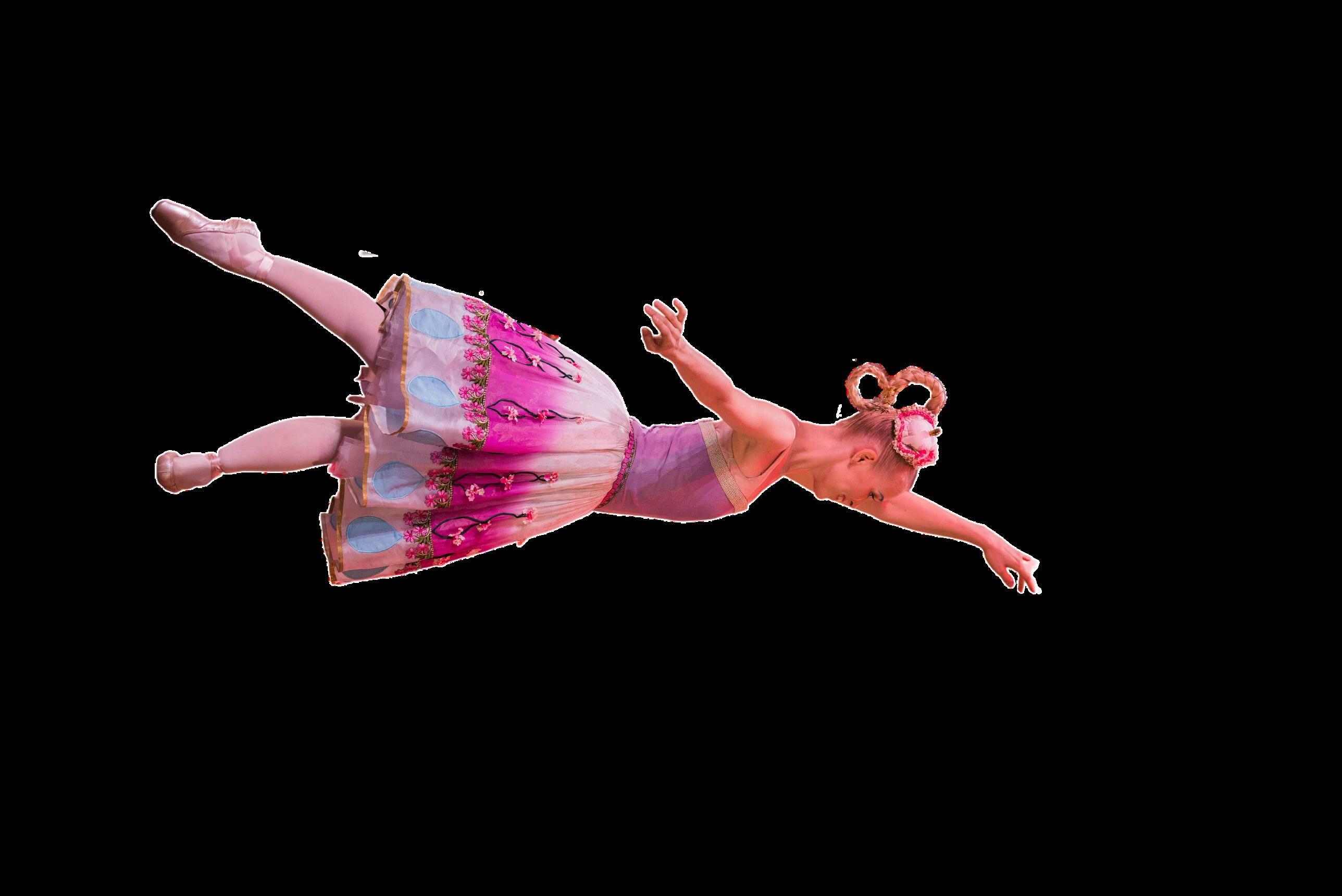
(laughs) I didn’t! I always did quite well in school, which was a blessing I suppose. I always did my homework, I was a very disciplined student like that. When I started dancing in India, it was just at the weekends. When YLDC started, we would rehearse with Miss Yana twice a week from 7:00 to 9:00 pm I would do my homework after that So I didn’t really balance it I guess The last two years out of the three in India I was really focused on dance I guess because I didn’t find school very difficult before that I still managed to do quite well I was like, ‘I’m going to dance, that’s it I’m going to audition for dance college’ I used to have permission to leave school, go and do a private class with Miss Yana and come back after lunch for the last class
I worked in a trekking shop, Field and Trek. Incidentally I went there to work through Miss Yana. Miss Yana loves trekking, she has climbed a lot of mountains and done a lot of travel in mountain ranges. She has a lot of gear and she had been to this shop to buy a lot of it. So she said ‘Oh why don’t you go there and get a job?’ and I said, ‘Yeah, why not?’ I don’t think I would have thought of going there myself. I became a bit of an expert in jackets, tents, hardcore trekking boots. I learned how to make insoles for the boots. It was a good experience. At 18 I was on my own in London, sharing a flat with people I didn’t know before, earning money and paying for dance classes. You grow up a lot in a short time.
What inspired you to become a teacher of dance?
Miss Yana When I didn’t like the way dance college was going in that first year, I still knew that dance would be a major part of my life I knew that I was not really cut out to become a professional dancer, however, in terms of going to auditions, pushing people aside and pushing yourself to the top among others It’s not me I am good at pushing myself in class, but I realised quite quickly that it simply wasn’t in my nature to push through auditions and be in constant competition with others
How can I be part of the dance world in the biggest way possible without becoming a professional dancer? Through teaching what I love I have experienced one of the most amazing teachers in the world Miss Yana is the biggest influence There are so many teachers who don’t have that deep way of connecting with students It is that super detailed
and personal approach, for each and every student that is special I think everyone who has been through TLFCB knows this When they attend dance classes elsewhere they go ‘Oh! I don’t get any corrections,' or, 'The teacher didn’t say anything to me’ Even at dance college, we didn’t get that kind of attention You are just one of many there You are expected to do the work yourself, guided, but not with the personal attention
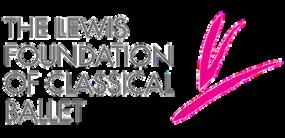

Seeing that need in so many amazing students, all ready to soak everything up, I wanted to be that inspiration, that source for others
What is the difference between teaching abroad and in India?
It is hard to say because all students are very different, wherever you go in the world I would say that here, at least before, there was more discipline than with students in the west I think that is changing a bit now though Kids are exposed to more things than they were, say 10 or 15 years ago, through TV and online media It felt very different when I moved back to Sweden for a couple of years, after teaching in India I felt like kids were more blasé about things there, but in retrospect that is a generalisation There are kids everywhere who are so keen to learn At the end of the day kids are kids, wherever they are Oh! One difference is that students in Sweden are very rarely late, whereas here students are very often late!
In terms of the students themselves - most of them come as themselves, keen to learn, happy to be there and just want to dance
What is something you wish you could tell your younger self?
Not to be so hard on myself about certain things I don’t regret any of the decisions I’ve made so far, even though I have made some choices that I wouldn’t make now It is all those things that lead us on our path Yes, not be so hard on myself and to let go a bit more
What was the first class you taught like?
You expect me to remember that!? (laughs) I had assisted in a lot of classes with Miss Yana even before I went to dance college I don’t really remember the very first class I taught by myself, but it was a class in Jayanagar Those classes were started for me to teach when I came back from London I remember it being very exciting and feeling a huge sense of responsibility for the kids who were coming to that class. Now it was my own thing, you know. These kids were coming in, never having done a step of ballet before. It was a big deal.
I have so many good memories from that first studio in Jayanagar, I enjoyed it so much. That excitement of ‘These are my kids, my responsibility; I am going to watch them grow.’
Another thing would be not to isolate myself For example, when I went to dance college, I isolated myself I rarely joined parties and get-togethers I had a few good friends Yes, that is something I would tell myself To be a bit more social Not to be such a hermit!
How do you make sure to keep a work- life balance?
Yoga is a big help Sometimes to wind the day down and sometimes to wind it up
I also try to make sure that I make time for the things I want to do outside work. Sometimes that means saying ‘I need to do nothing today because I need to relax.' So, yes, the balance sometimes involves making choices. Deciding not to go for an event or outing but stay home and chill out, watch a movie and
By Neerja Chandan and Arpitha Bhat
When you started ballet, did you ever wonder how the little hops and skips you did would turn into the grand, spectacular movements that you watched the 'big girls' do? In this article, you’ll get to see how four simple steps progress, grow and transform through the grades


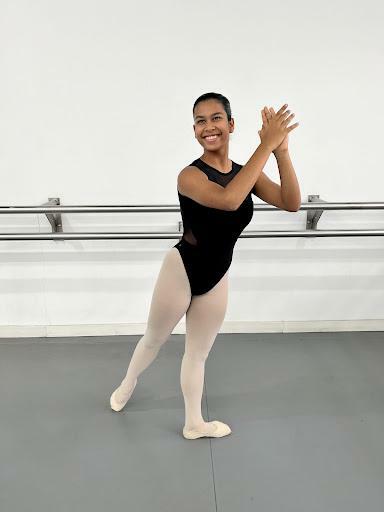

Grade 2 Set adage
Grade 4




Posé temps-levé in first arabesque
Primary 3 walks and 1 clap
Primary students get their first taste of this position in a set exercise called three walks and one clap. The teacher will use this position to get the foundation - hips, weight over the front foot and pointed back toes.
Grade 3 Posé set exercise

Grade 1 Posé set exercise
Now students learn to keep their balance while raising their working leg slightly off the floor. The arms are in demi bras which reminds the students to keep their weight forward.
The leg here is raised to a minimum of a forty five degree angle The arms are in first arabesque, with squared shoulders and front arm at eye level Students work very hard to achieve this arm line with correct positioning of the back shoulder
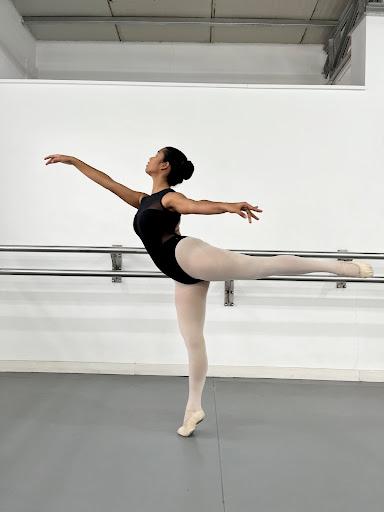
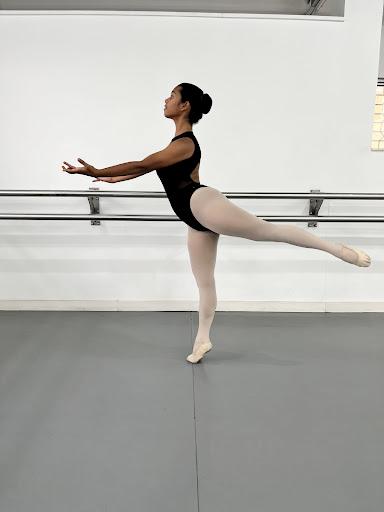
Grade 6 Arabesque on demipointe
The arms are in the same position as in Grade 1 while the legs graduate onto demi pointe
The arabesque finally takes off, keeping the first arabesque armline and focusing on a pointed underneath foot

Finally, we’ve reached the position that the word ballet brings to most of our minds In Grade 6, the students have to have their arabesques high with ninety degrees as the lower limit They must get their legs up higher without losing the squareness of the hips

(This
further progresses onto pointe)
position
Pre-primary Sauté in parallel



Primary Sauté in 1st
This little jump has a long way to go It forms the basis of all the jumps you learn throughout the years With the feet in parallel and pointing when in the air, students learn the pattern: bend, stretch, bend
The jump gets slightly trickier from here. You jump from third position, change legs in the air and land with the other leg in front in third position. Arms are kept in bras bas.
Here the students jump from third position, with the knees pulled up and feet pointing down to the floor. This jump is landed in third without changing feet.

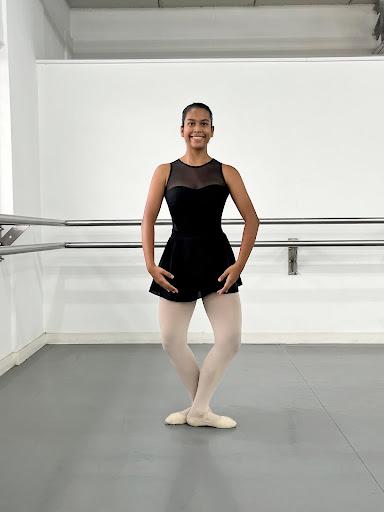


This simple jump starts from a plié in first position The teacher ensures that the students learn the action of pulling their knees up fast and keeping their toes pointed in the air Grade 1 Changement Grade 2 Soubresaut Grade 2 Échappe Sauté to Seconde

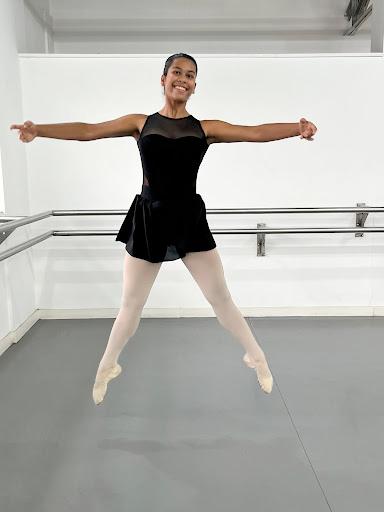
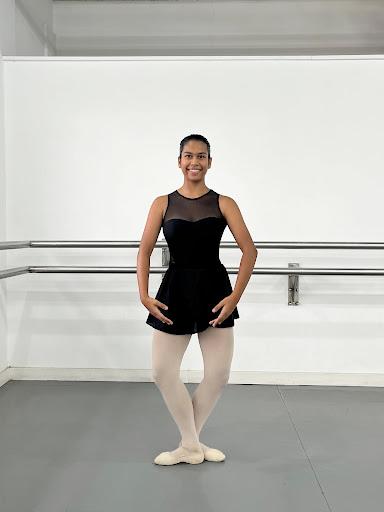



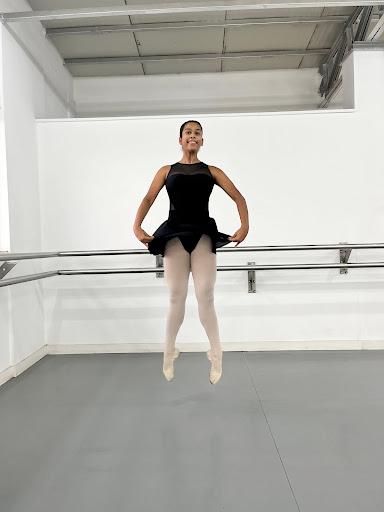
In Grade 2, the students learn to jump from a turned out third and land in second position Thighs must keep pushing back Then they take off from second position and land back in third.
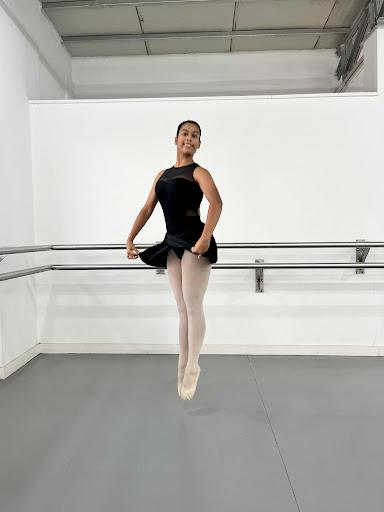
(From Grade 2 onwards, there are many more jumps that start and end with two feet on the ground)
Pre-primary Skipping position
Pre-Primary Skipping
Skipping position is the foundation for attitude devant The leg is bent and lifted slightly off the floor, the feet point downwards and students must hold their skirts.
Grade 1




Skipping is a travelling step and a favourite of many young students They must maintain the skipping position while jumping up and moving forward.
Posé temps-levé in attitude devant
Steps transforms through the grades and ballet as an art form has evolved through the years too Watch this fascinating series by the Royal Ballet calledBalletEvolved.

Grade 5
With the skipping position in place, the arms are now added to the step The student steps de côté into first position and lifts the leg into a low attitude devant, and performs a temps-levé by sweeping the leg through first and then up
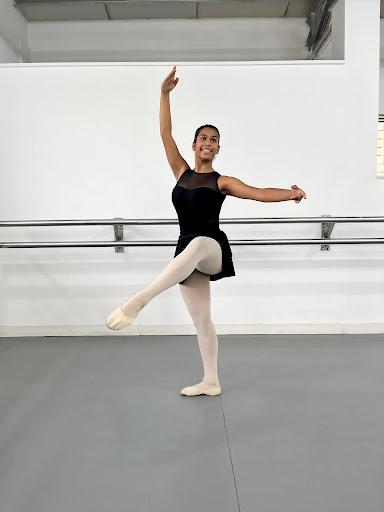
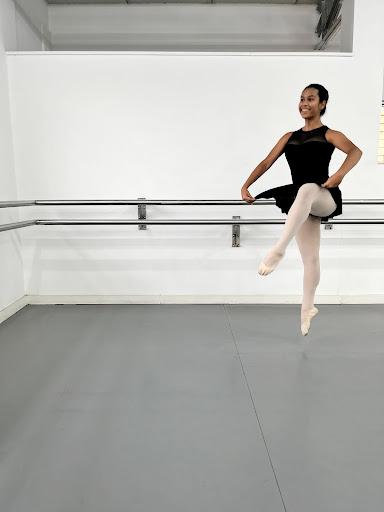

Attitude devant on a flat foot
The leg is lifted higher The focus is kept on lifting the leg from underneath The arms are either in opposition or ordinaire

FEMALE
Primary Curtsey holding skirt
The students hold their skirts and step one foot to cou-depied derrière They bend both knees and the knees are kept facing sideways
Grade 1 Curtsey with arms to second
Grade 2 Révérence with arms to demi bras
Instead of holding the skirt, the student now keeps their arms in à la second while doing the same curtsey.
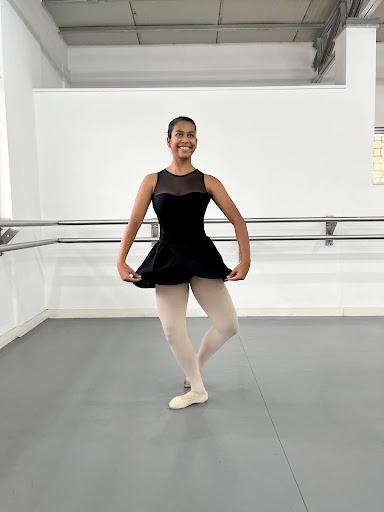


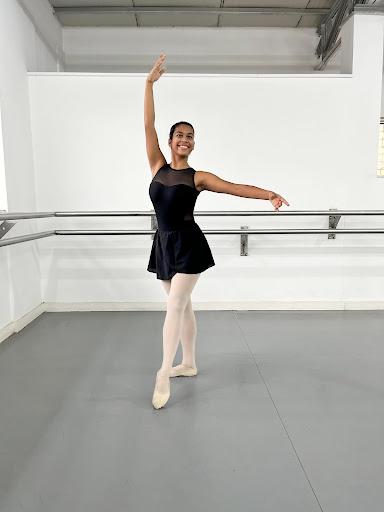
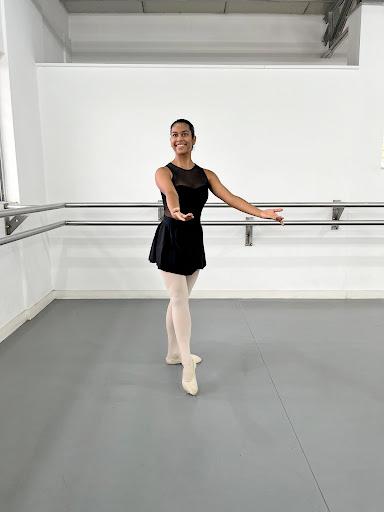

Pointe work
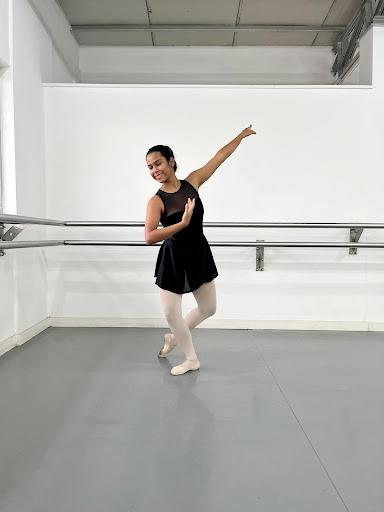
Révérence with arms through attitude into demi-seconde

Advanced Full révérence
After doing the same révérence as in Grade 1, students then chassé en arrière to a dégagé devant with arms in demi bras
After completing the Grade 2 révérence, instead of taking the arms to demi bras, the students takes the arms to attitude in opposition The student then takes the leg in a rond de jambe all the way to cou-depied derrière and brings the arms down to demi sexonde as they bend their knees
And finally, the most elaborate révérence After pulling up to attitude as in the Pointe work révéerence the arm is extended to an open arabesque line while the other is bent towards the chest as the leg moves in a rond de jambe into cou de pied derrière As the dancer straightens out the supporting leg, the arms open into an open arabesque
Now we've finally come to understand how the steps we learn in the earlier grades transition into more complex movements Everyone starts off aspiring to dance like the professionals we see on stage In order to learn and execute these steps requires years of practice, dedication and hard work!

HOW
BALLET
ByAashayaAnandandAnaghaMadhan
PERSONAL REFLECTIONS
Going to ballet class every week has been an integral part of our lives for as long as we remember. We couldn’t ever completely describe the ways in which it has moulded and shaped us, both physically and mentally. On days that we feel lost, a ballet class makes us feel a little more at home. It gives us a sense of comfort and familiarity. A lot of students share this feeling; ballet is healing and transformative. Everyone has their own connection with it. In this article, we try to share that feeling with you. .............
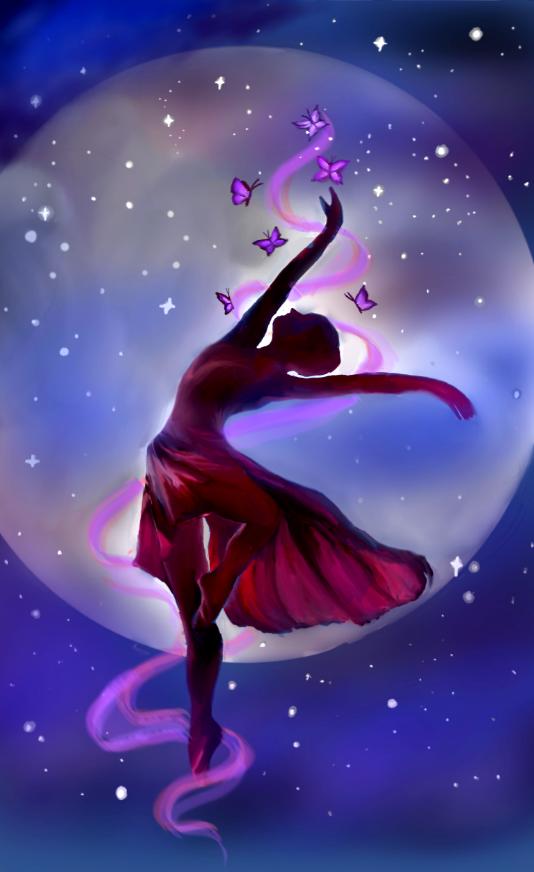




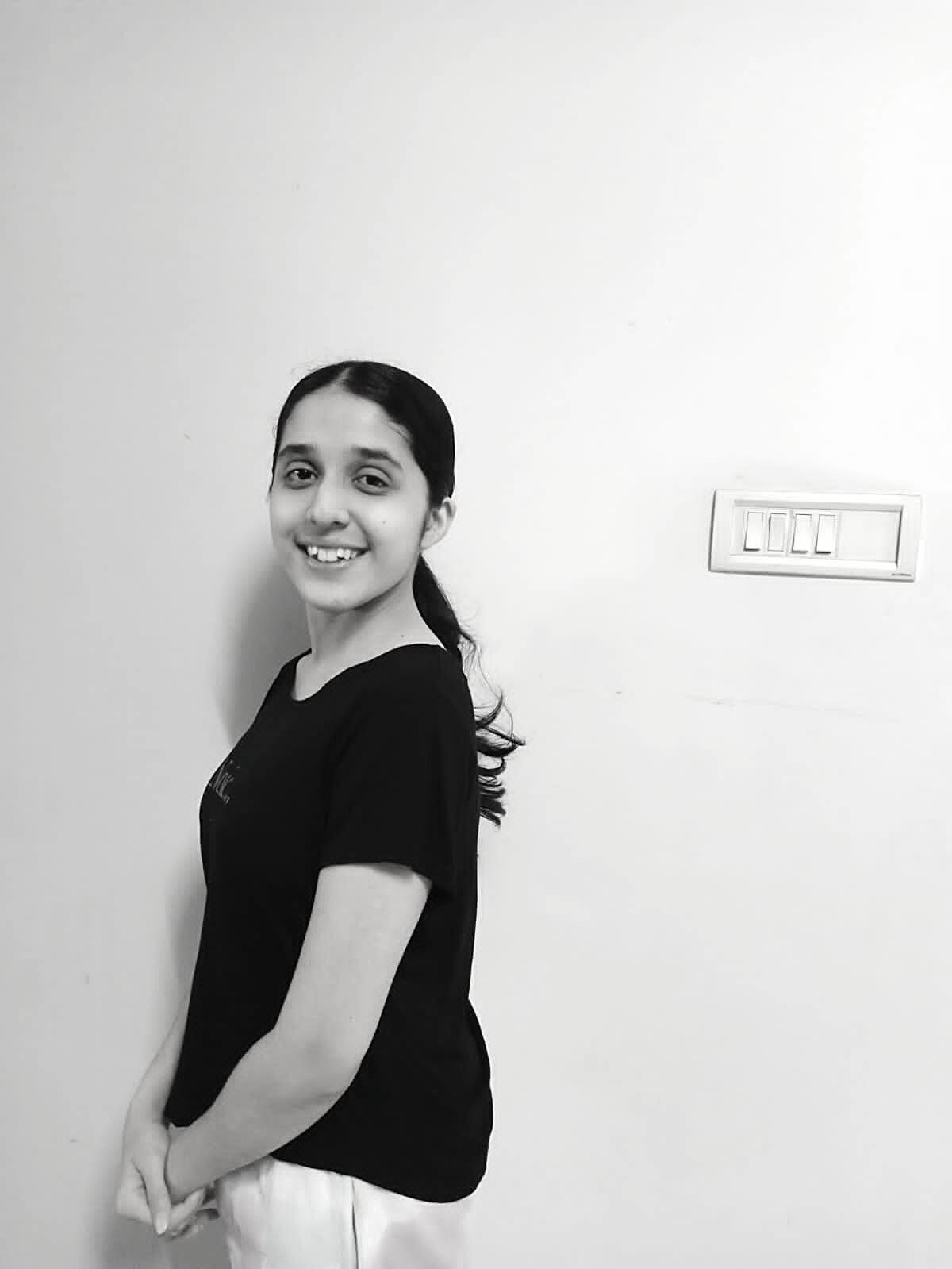
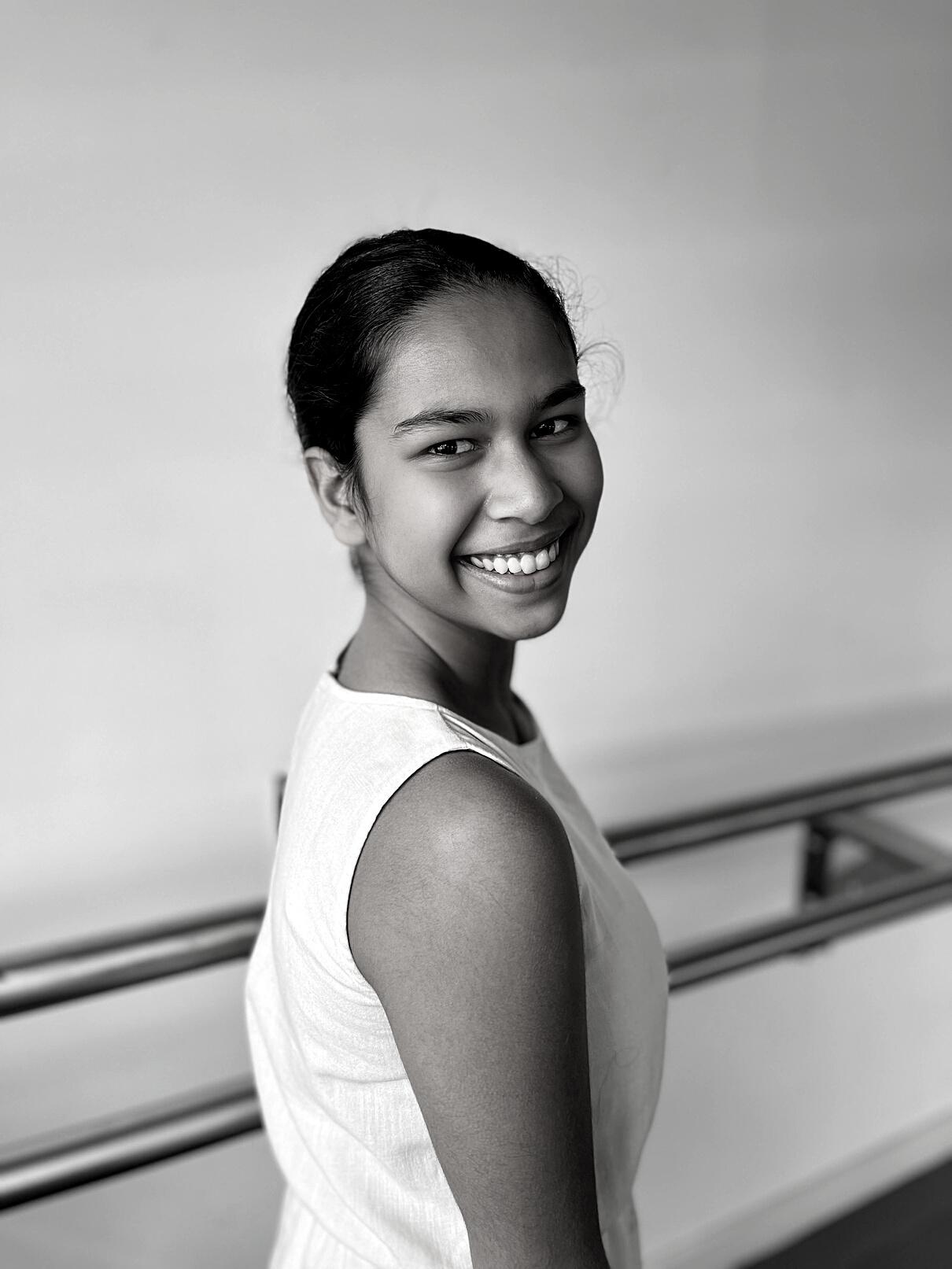
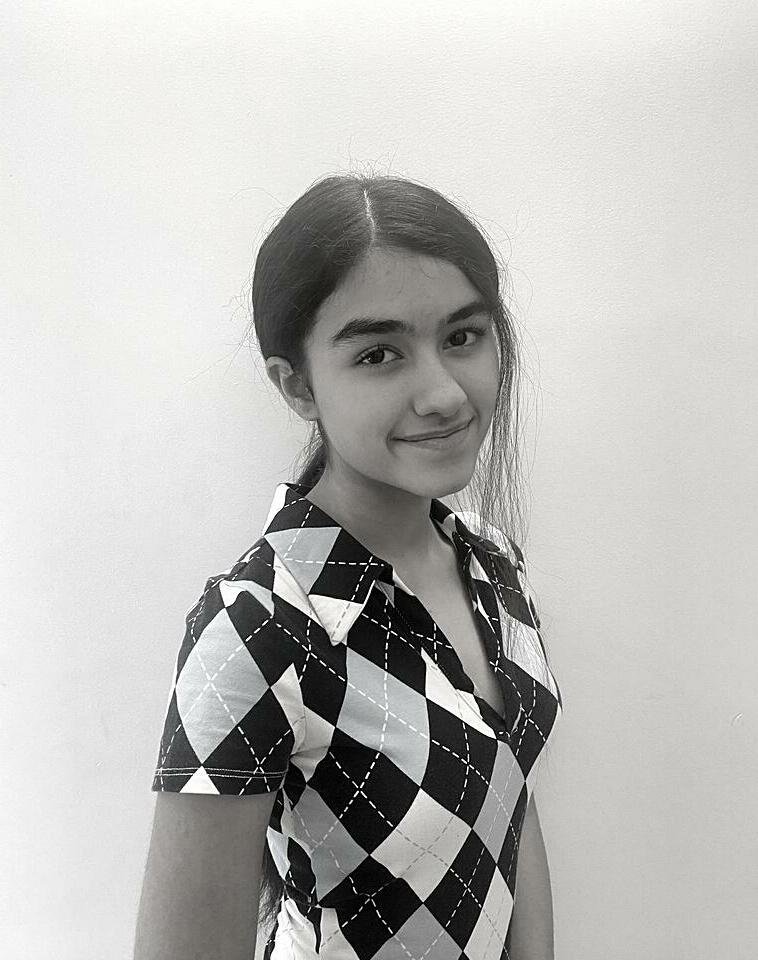



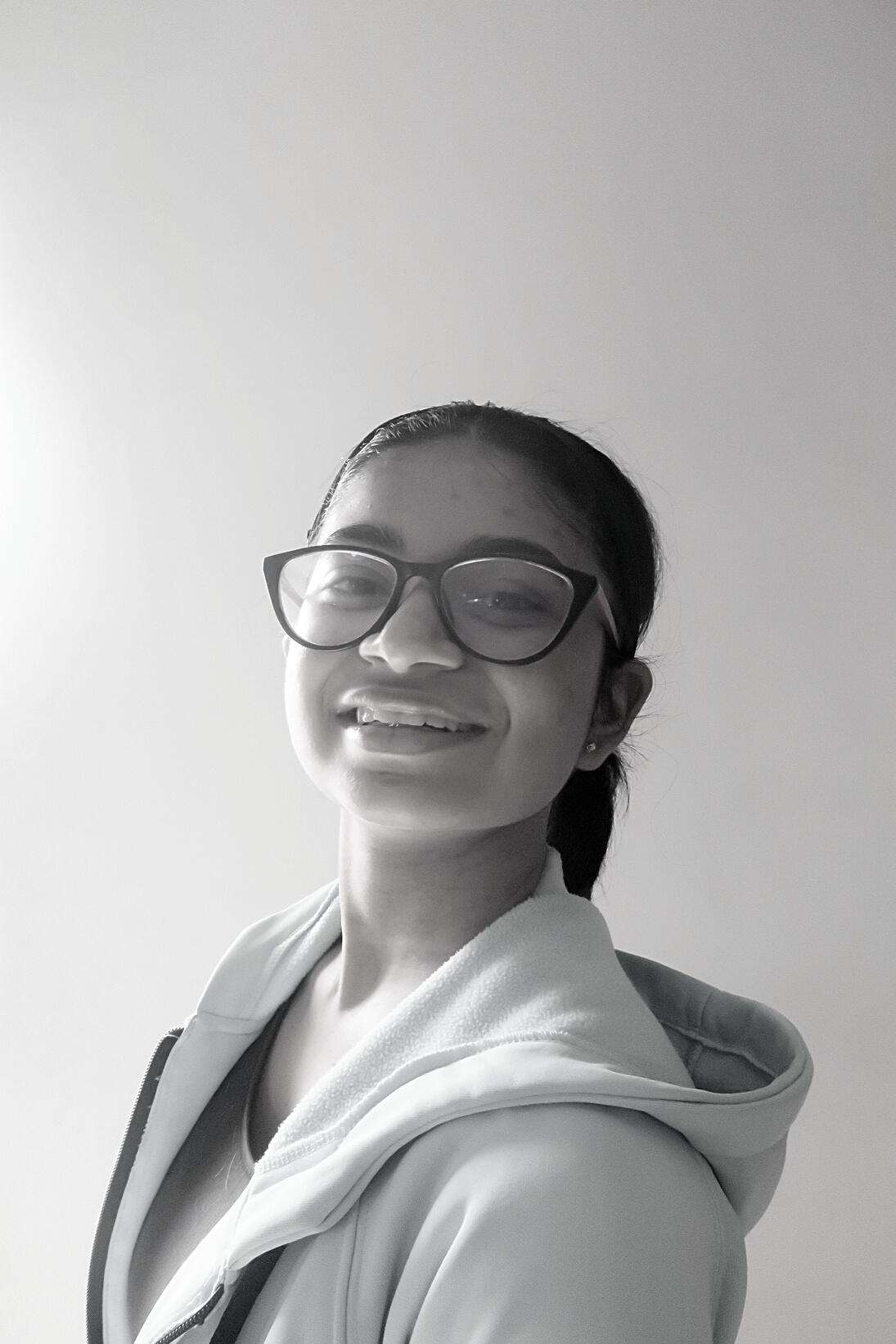

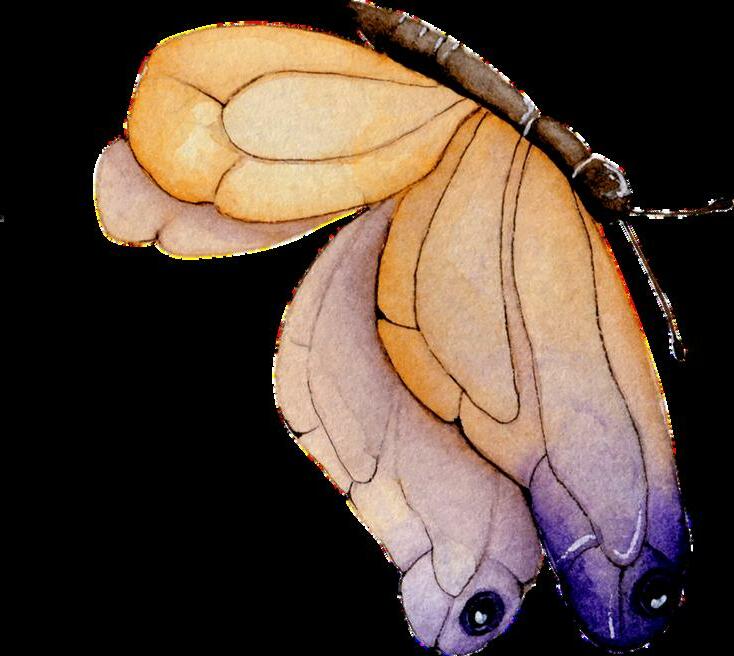







 Arpitha Bhat
Arpitha Bhat
















































